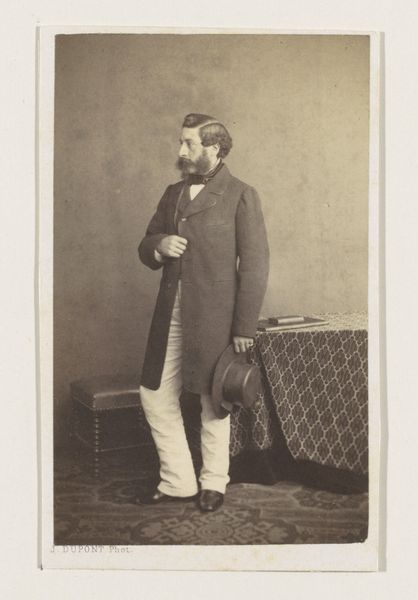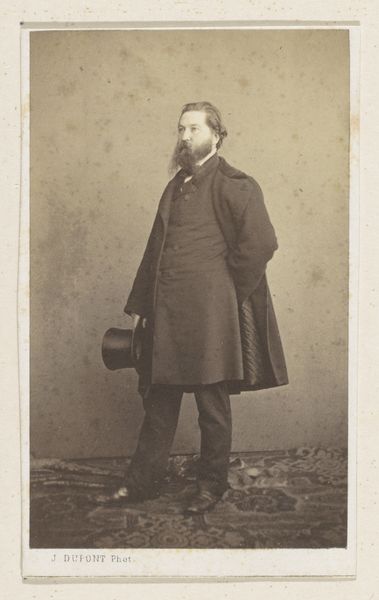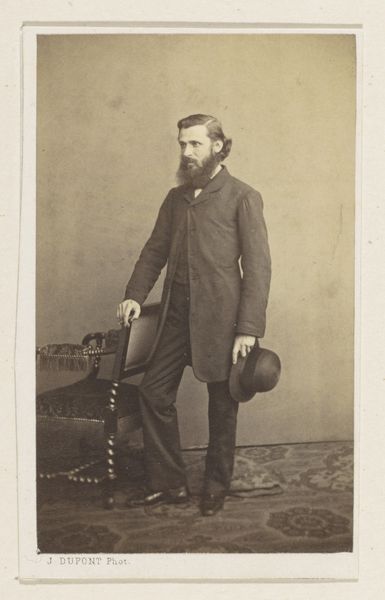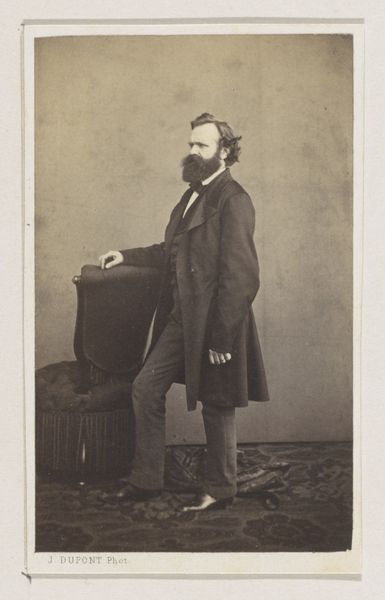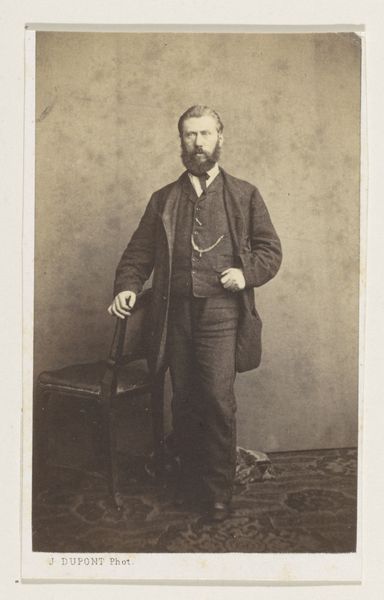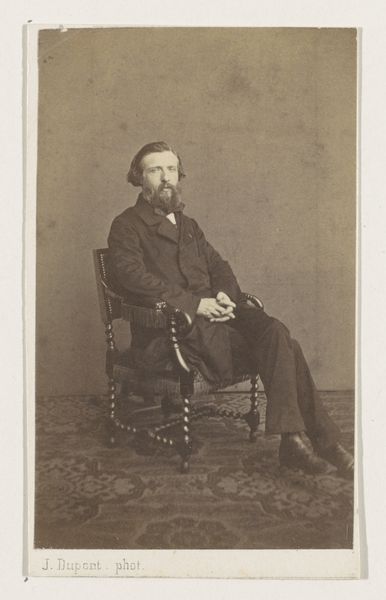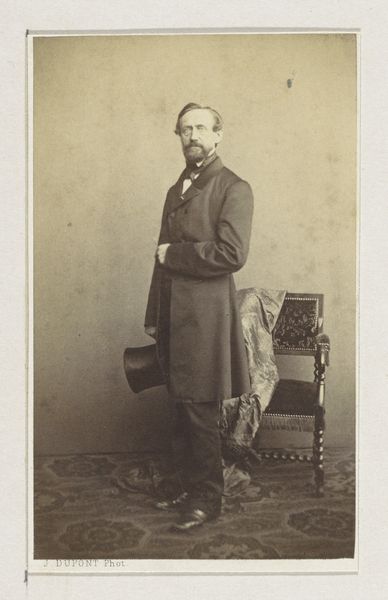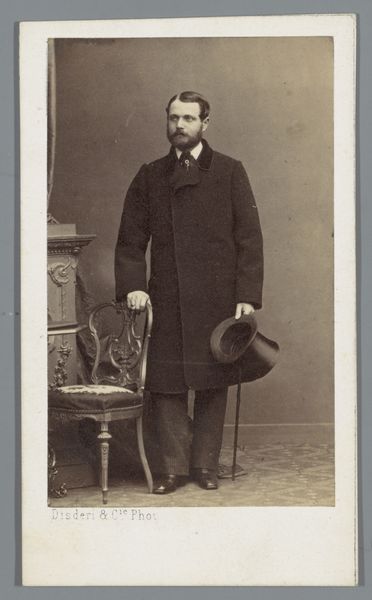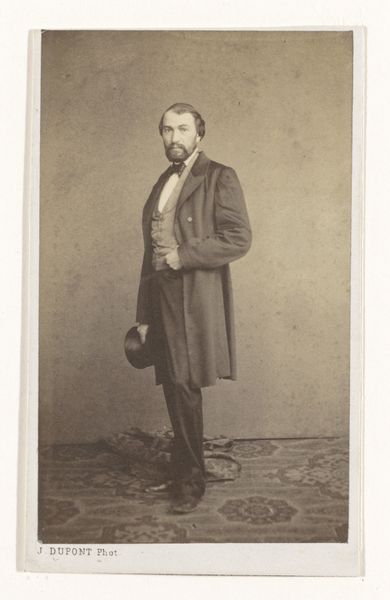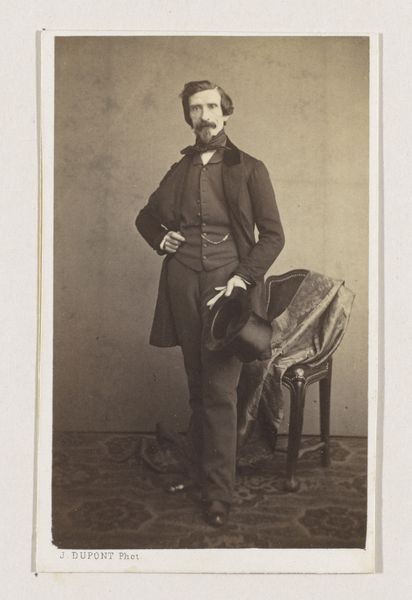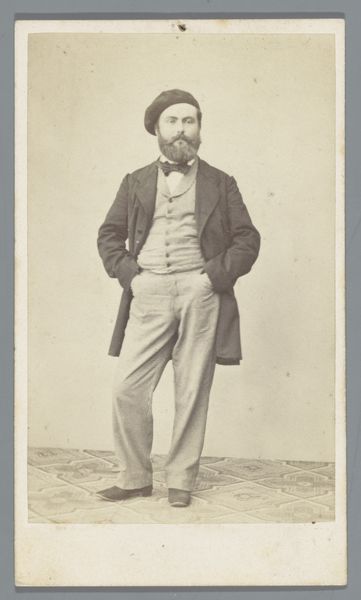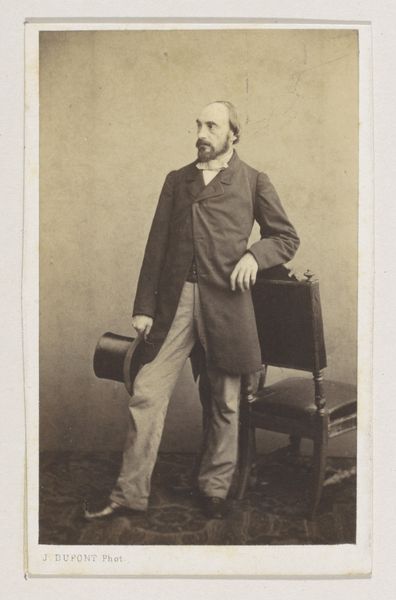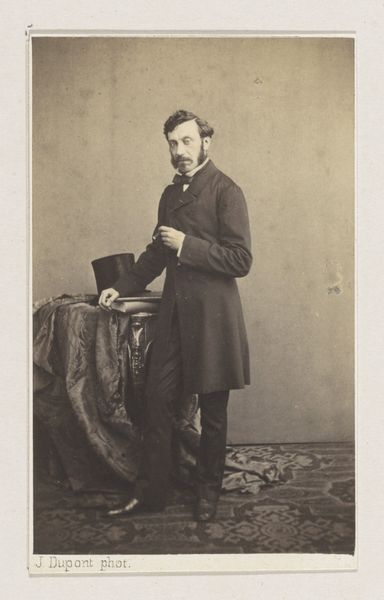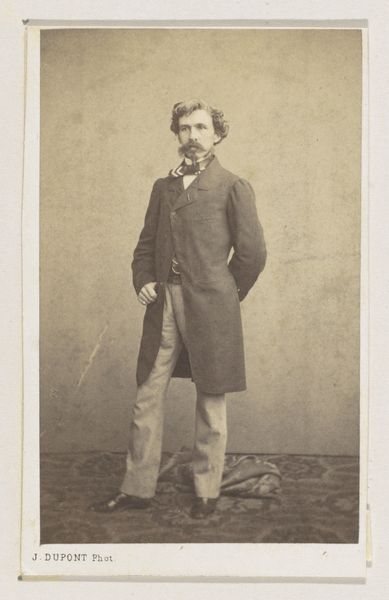
photography, gelatin-silver-print
#
portrait
#
photography
#
historical photography
#
gelatin-silver-print
#
realism
Dimensions: height 101 mm, width 62 mm
Copyright: Rijks Museum: Open Domain
Editor: This is a photograph from 1861 by Joseph Dupont, a gelatin-silver print titled "Portrait of the Painter François Antoine de Bruycker". It's interesting how this image seeks to capture and present a creative individual using early photographic processes. What can you tell me about it? Curator: Focusing on materiality, let's consider the process. The gelatin-silver print speaks volumes. Before sophisticated darkrooms, producing such images required painstaking labor: coating the plates, precise timing, expensive chemicals. Look at the details – achievable despite limitations. Think about the resources expended to create a seemingly simple portrait. What does that tell us about how early photography elevated its subjects? Editor: So, the labor and material investment are key? Curator: Precisely. It transforms our understanding of the sitter. It also compels us to contemplate on how images and identity construction related during this transitional era. Photography, a burgeoning industry at that point, also impacts labor relations. Editor: It’s amazing how thinking about the physical materials changes how I see the photograph, beyond just its face value as a portrait. Curator: It re-positions how the art historical and commercial facets interacted. The image-making industry's rise influences the artist's role. How do we place his work within a material culture that created value in portraiture and shaped the identity of an artist, and what that represented? Editor: Thinking about the production helps to connect the dots about artistic labor, early photography, and cultural image construction. Curator: Absolutely, material reality allows us insight into consumption and creation within that framework.
Comments
No comments
Be the first to comment and join the conversation on the ultimate creative platform.
